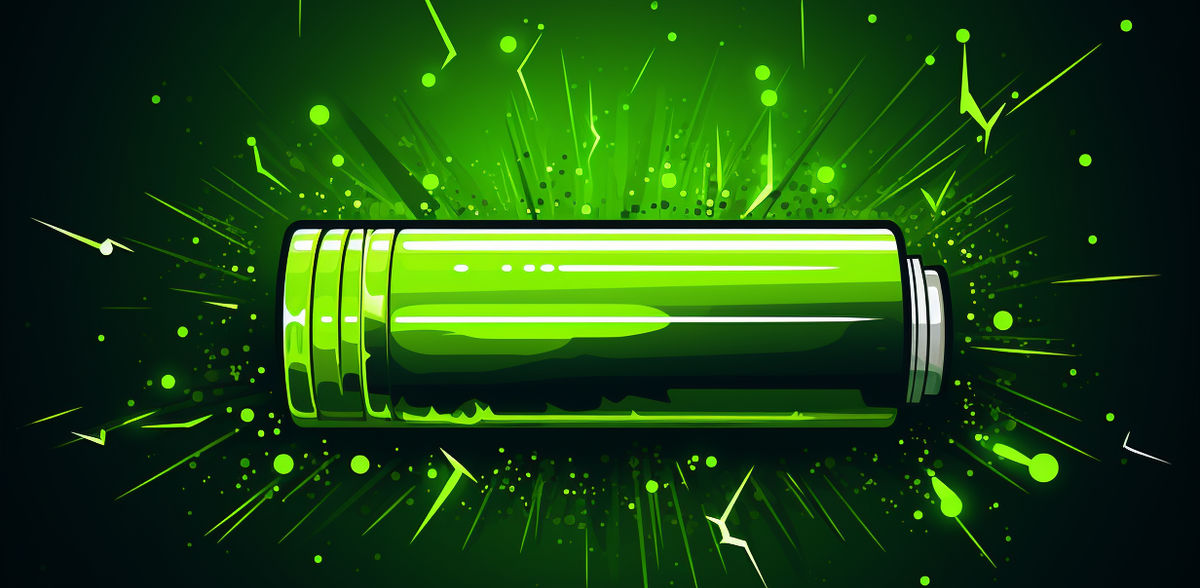New energy storage system combines battery and electrolyser
Tool for the energy transition: Only one tenth of the material costs of a lithium-ion battery
Advertisement
A research consortium with the participation of TU Berlin is working on a novel zinc-hydrogen battery that can store electricity with a high degree of efficiency and releases not only electrical energy but also hydrogen when discharging. This is achieved by combining the negative zinc electrode of the battery with the principle of alkaline water electrolysis. A special hydrogen/oxygen gas electrode is used as the positive counter-electrode, which serves as an electrocatalyst. Initial tests of the new energy storage system showed an efficiency of 50 percent for electricity storage and 80 percent for hydrogen generation, with a predicted service life of ten years.
Germany's energy transition requires not only efficient plants for generating renewable electrical energy from wind and sunlight, but also cost-effective and efficient storage and transport technologies. This is the only way to bring green energy from its points of generation to Germany's metropolitan areas and industrial centers, and also to compensate for the natural fluctuation in its generation. "In the public perception, battery and hydrogen technologies have been in competition with each other here so far," says Prof. Dr. Peter Strasser, head of the "Electrochemical Catalysis, Energy and Materials Sciences" department at TU Berlin. "The new approach of our consortium project shows that it's worth challenging this way of thinking and instead picking the best of both worlds."
Water electrolysis in two steps - split between discharge and charge processes
"At the heart of our new combi-battery is a catalytically active, bifunctional gas electrode," explains Strasser. Together with the negative zinc electrode, it is located in a liquid electrolyte of potassium hydroxide and water, i.e. caustic potash solution. During the discharge process, the catalyst of the gas electrode splits off hydrogen molecules (H2) from the water molecules (H2O). This hydrogen escapes and can be stored and reused. At the same time, electrically negative OH ions in the electrolyte migrate to the zinc electrode. There they react with the zinc and form zinc oxide (ZnO) and water while releasing electrons. This discharge process thus provides usable electrical energy and hydrogen gas at the same time.
"Only when the battery is recharged does the second part of electrolysis take place, the release of oxygen," says Strasser. With the help of electrical energy and electrons from outside, the zinc oxide electrode is reduced back to metallic zinc, OH ions are formed, which now migrate to the gas electrode, where they are converted into water by the catalyst, with oxygen escaping (4 OH → 2 H2O + O2). For these processes to run continuously, water must be supplied to the new energy storage system in the quantity in which hydrogen and oxygen escape.
Good efficiency, inexpensive raw materials, easy recycling.
"The special thing about this Zn-H2 battery, then, is that when it is discharged, the energy is provided both in the form of electricity and as hydrogen gas," says Peter Strasser. "The hydrogen can then either be used directly as a raw material in chemical industry processes, converted into electricity in conventional fuel cells or turbines, or used as fuel for heat in gas-fired power plants or district heating networks." Compared with conventional lithium-ion batteries, the new battery uses only much cheaper raw materials (steel, zinc, potassium hydroxide, water), which are only about one-tenth as expensive. They also make the battery easily recyclable.
Initial tests at the Fraunhofer Institute for Reliability and Microintegration (IZM), which is also leading the consortium, have already shown very good efficiencies for the new battery. With an overall efficiency of 50 percent for "electricity-to-electricity" storage, this is twice as high as for most power-to-gas technologies, in which, for example, electricity from wind power is converted into hydrogen gas via conventional electrolysis and then the hydrogen is converted back into electricity using turbines or fuel cells. In the case of hydrogen generation, the efficiency is as high as 80 percent. In addition, laboratory tests suggest that the systems will have a service life of around ten years.
Establishment of a demonstrator by the end of 2023
"TU Berlin has contributed to the consortium above all our experience in alkaline water electrolysis, as well as our many years of expertise in catalyst technology," explains Peter Strasser. The researchers now want to set up a demonstrator and carry out reliability tests by the end of the year. The charging and discharging parameters must be optimized so that stable operation is possible over several thousand cycles. If the results of the demonstrator experiments are positive, the company Zn2H2 GmbH, which is also a member of the consortium and has already applied for several patents for the process, will ensure that it can be rapidly implemented on the market.
The other consortium partners in the project are Steel PRO Maschinenbau GmbH, the Fraunhofer Institute for Manufacturing Technology and Applied Materials Research (IFAM), and the Fritz Haber Institute of the Max Planck Society. The project with the abbreviation "Zn-H2" is funded by the German Federal Ministry of Education and Research (BMBF) under grant number 03SF0630A and will run until September 2025.
Note: This article has been translated using a computer system without human intervention. LUMITOS offers these automatic translations to present a wider range of current news. Since this article has been translated with automatic translation, it is possible that it contains errors in vocabulary, syntax or grammar. The original article in German can be found here.
Other news from the department science
Most read news
More news from our other portals
See the theme worlds for related content
Topic World Battery Technology
The topic world Battery Technology combines relevant knowledge in a unique way. Here you will find everything about suppliers and their products, webinars, white papers, catalogs and brochures.

Topic World Battery Technology
The topic world Battery Technology combines relevant knowledge in a unique way. Here you will find everything about suppliers and their products, webinars, white papers, catalogs and brochures.

































































